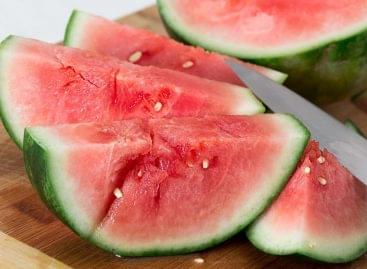With cool calculation
Saving energy is the driving force behind innovation in cooling technology. The
economical use of cooling equipment results in lower operation costs for retailers.
In Hungary, the most important trend is the appearance of deep freezer islands,
wall-mounted gondola shelves, and cooling furniture. Wet condenser use is also
spreading, together with regaining heat for heating and warming water; the role of
LED lighting is also becoming more important. One of the most striking solutions
is the closing of cooling furniture, which not only saves energy but also improves
the quality of products. Probably the latter is one of the reasons why cooled product
sales are not decreasing. Hybrid condensers are used more and more widely:
on hot summer days water is vaporised to reduce the condensation temperature.
It is a simple and cost-effective method. In Hungary, the mechanical condition of refrigerators and display freezers varies from shop to shop. One of the most important aspects is knowing the products and refrigerators really well, as a display freezer needs to be operated differently with different kinds of products. A typical mistake is overfilling the display freezer, by this hindering optimal cooling and potentially causing damage to both the product and the cooling device. Display freezers need maintenance checks every 2-3 months by qualified personnel. Modern,
energy saving display freezers may be up to 30 percent cheaper to operate.
Built-in freezers generate heat, consequently the store should have air conditioning installed – meaning that operation costs are higher. External coolers’ operation costs are lower, but they are more expensive to buy. For retail chains it is very important to transport frozen and fresh products in a cost-effective way. Different temperatures must be set for the two product types: 0 and +4 ºC for sensitive fresh products and below –18 ºC for frozen products. Messer and Olivo Cold Logistics jointly developed Siber System, which is capable of transporting products with different temperature requirements for more than 24 hours.
A special usage of RFID technology is the tracking of products in the cooling chain. One of the fields of utilisation is guaranteeing the good quality of ice creams – ice cram quality could significantly deteriorate above –18 ºC. As from production to the consumers the product can go through as much as ten agents, producers need a system that lays down storing and handling conditions. Ice cream pallets and in-store display freezers are equipped with semi-passive RFID tags (these can work at –30 ºC and perform 400,000 time/temperature registrations) which record temperature data. Finally the data is analysed and used to improve the system.
Related news
Related news
Drought, technological competition and collaboration: the domestic melon season has begun
The 2025 Hungarian melon season starts amidst serious challenges: the…
Read more >Tourism economy deteriorating, but better than the national economic average
In June 2025, 70% of tourism companies reported an increase…
Read more >Price increases, export declines, new consumer habits – this is how the poultry and egg market developed in the first half of 2025
Látványos változások jellemezték 2025 első félévét a hazai baromfi- és…
Read more >



